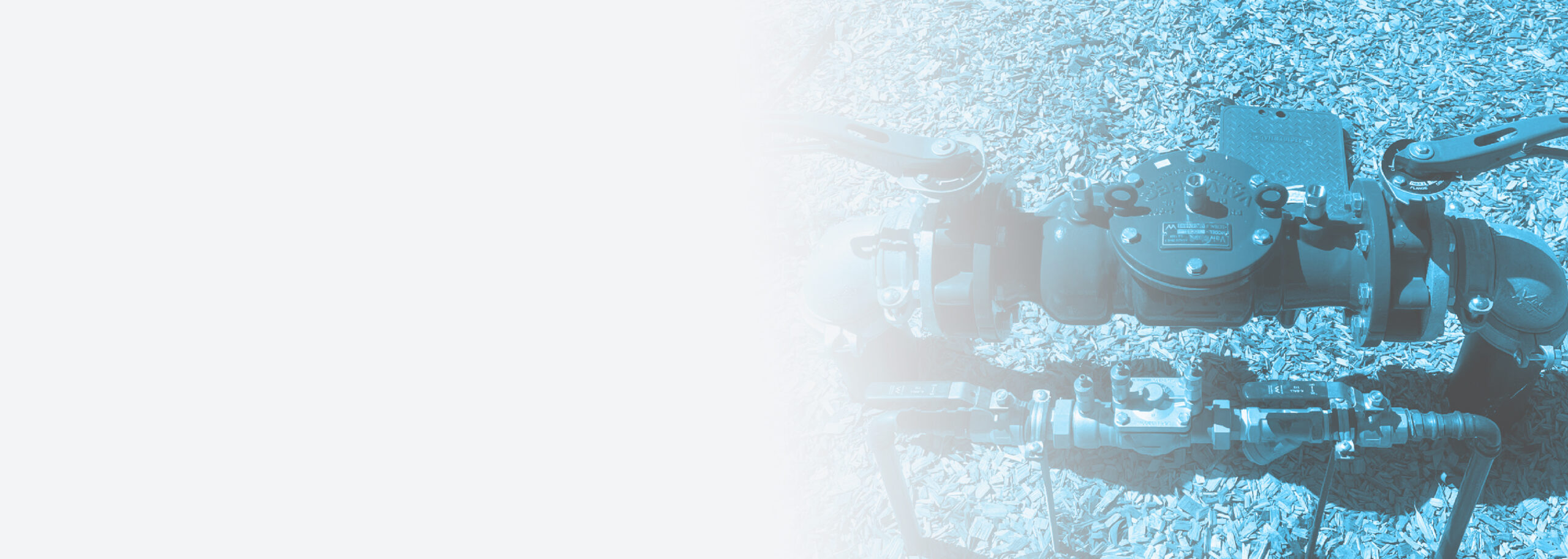What Causes Backflow?
Backflow can occur when there is a disruption in the normal flow of water in your plumbing system. Under typical circumstances, water flows in one direction, from the potable water supply through fixtures like faucets and showers, and then down the drain to the sewer system. This flow is maintained by adequate water pressure, ensuring that you can safely drink water from your tap.
However, if the pressure in the water main drops below the pressure in your plumbing supply, backflow can happen. This causes the water flow to reverse direction, potentially allowing waste, pollutants, and other hazardous materials to enter your water supply. This can pose a serious health risk. Pressure changes in the water main can occur due to various reasons such as burst pipes or high demand during activities like during firefighting operations.
Ensure that your commercial property’s backflow prevention devices are functioning properly, and gain peace of mind with professional backflow testing Perth performed by our experienced plumbers at PBR Plumbing.


Backflow Prevention Perth
Frequently Asked Questions
- Discoloured water: If you notice a change in the colour of your tap water, such as it becoming brown, yellow, or murky, it could be a sign of a backflow leak. Backflow can cause contaminants or pollutants to enter the water supply, leading to discolouration.
- Unusual tastes or odours in water: Backflow can also cause changes in the taste or odour of your tap water. If you detect a strange or unpleasant taste or odour in your water that wasn't present before, it could be indicative of a backflow leak.
- Reduced water pressure: Backflow can disrupt the normal flow of water in your plumbing system, leading to reduced water pressure in your faucets or fixtures. If you notice a sudden drop in water pressure without any apparent reason, it could be a sign of backflow.
- Increased water bills: Backflow leaks can cause water to be wasted or used inefficiently, leading to increased water bills. If you notice a significant and unexplained increase in your water bills, it could be a sign of a backflow leak.
- New construction
- Additions/redevelopments of existing facilities
- Changes to water service
- Multiple buildings; residential or commercial
- Fire service applications, including new installations with medium-rated devices, require backflow prevention. Existing fire services may need modification to include backflow prevention devices
- Ornamental or recreational bodies of water, such as swimming pools, fish ponds, or fountains, may require backflow prevention devices depending on the level of backflow risk identified during investigation
- Physical separation between the water supply and the potential source of contamination
- Open vertical space that prevents any direct connection between the water supply and the plumbing system
- Ensures water cannot flow back into the potable water supply Atmospheric Vacuum Breaker
- Inexpensive option
- Consists of an inlet valve, check seat, and air inlet port
- Protects against backsiphonage caused by negative pressure in the pipes
- Does not protect against back pressure Pressure Vacuum Breaker
- Contains internally loaded check and air inlet valves
- Can be tested
- Protects against backsiphonage but not back pressure Double Check Valve
- Features two independent resilient seat-check valves
- Located between two shut-off valves
- Includes test cocks and stop valves for testing Reduced Pressure Zone Device
- Made up of an automatic differential-pressure valve between two or more independent resilient seat-check valves
- Equipped with shut-off valves
- Test cocks provided for checking Hose Bibb Vacuum Breaker
- Designed to prevent backsiphonage on faucets
- Prone to back pressure if the hose outlet is higher than the device
- Low Risk: There are connection problems to the drinking water supply that may be frustrating, but they do not pose a risk to health or cause injury.
- Medium Risk: Water connection problems could potentially endanger health.
- High Risk: Water connection problems could result in serious consequences, including death.
FILL IN THE FORM BELOW AND OUR TEAM WILL
GET IN TOUCH.

